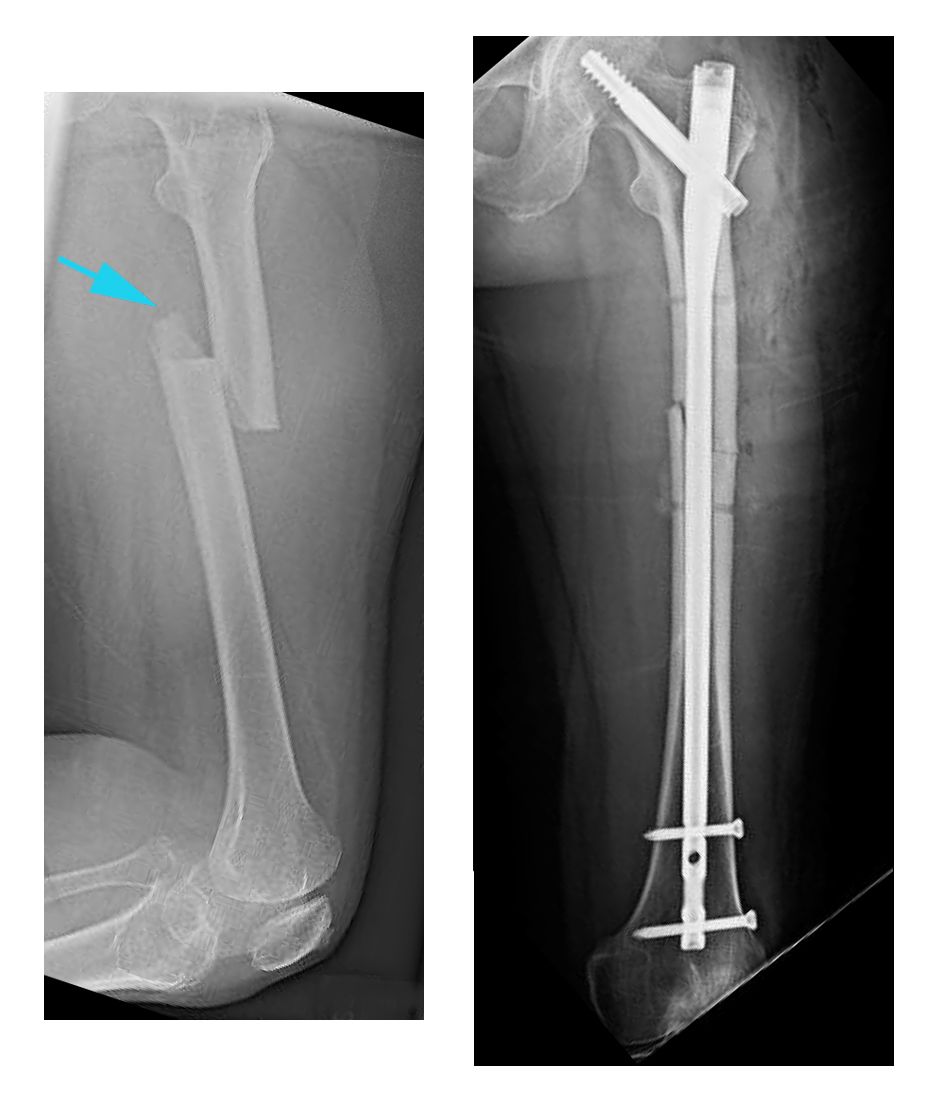
A femoral shaft fracture is a serious injury involving a break in the long, straight part of the thigh bone. Recovery often requires surgery with metal rods, plates, or screws to stabilize the bone. After surgery, physiotherapy plays a crucial role in restoring strength, mobility, and balance while preventing complications such as loss of range of motion, weakness, chronic pain, and loss of independence.
At Blue Space Physiotherapy in Toronto (North York), we provide individualized post-operative rehabilitation programs for femoral shaft fractures, helping patients return safely to walking, daily activities, general strengthening and FULL return to sport or work.
Some fractures occur with little or no trauma and are known as atypical femur fractures. These are rare but may be associated with long-term use of certain osteoporosis medications like bisphosphonates. These medications are very effective for preventing typical fractures but may, after many years, lead to stress-type fractures in the thigh bone.
At Blue Space Physiotherapy, we guide patients through every stage of recovery with:
Most patients regain independence and confidence through structured, personalized rehabilitation. If you’re recovering from a femur fracture or osteoporosis related injury, we can help you move safely and regain your quality of life.

Arjun Patel, PT, MScPT, MCPA is an orthopedic, neuro, and vestibular physiotherapist. He is the director of Blue Space Clinic Physiotherapy and sees complex cases on a daily basis. He is also an adjunct lecturer at the faculty of medicine at University of Toronto.
To learn more about Arjun and our clinic, click here!